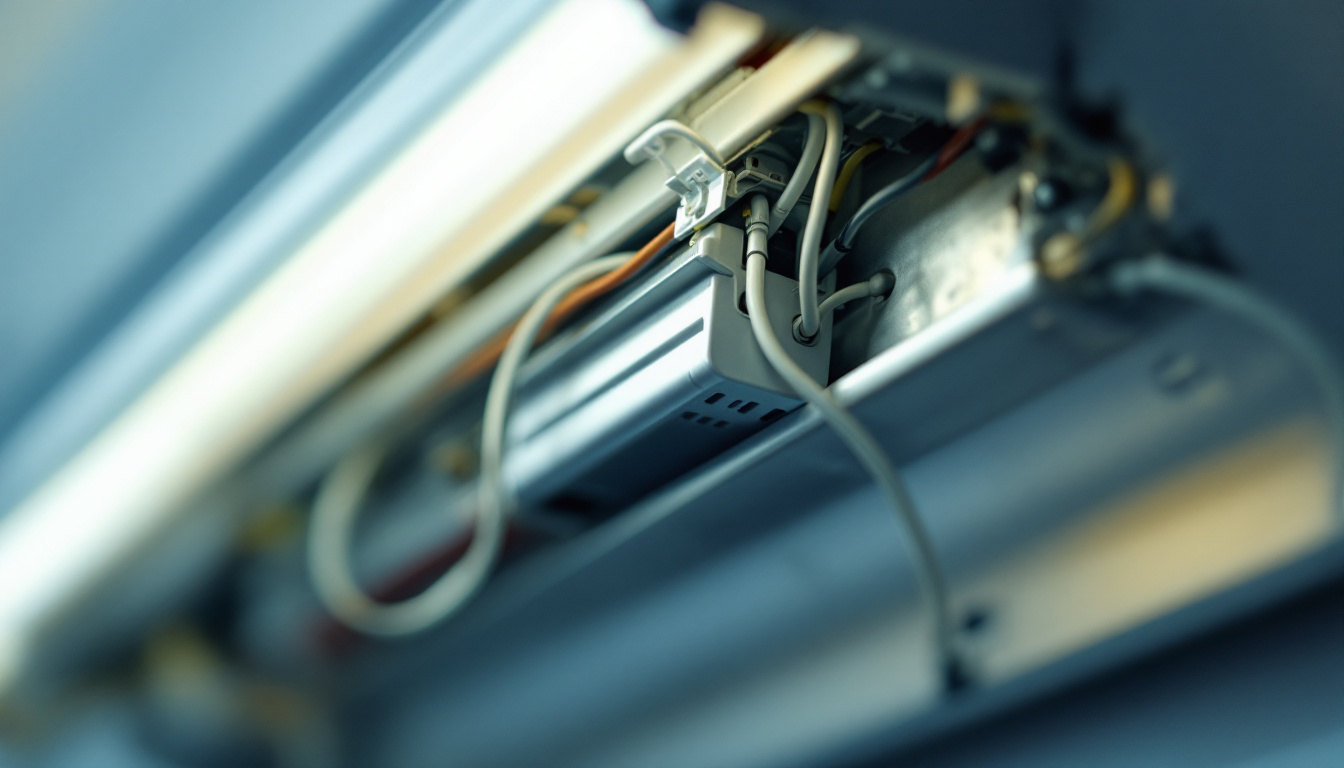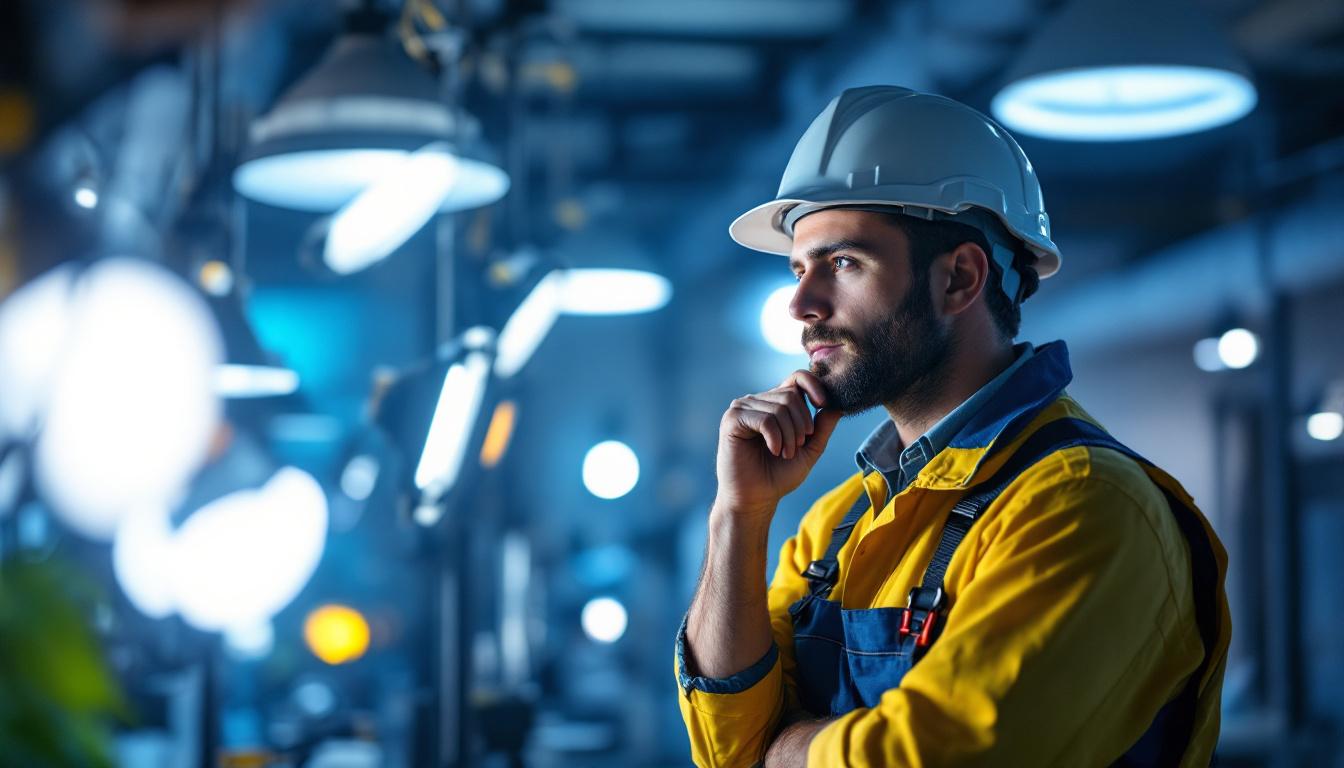
In the realm of commercial and industrial lighting, fluorescent light fixtures have long been a staple due to their efficiency and brightness. However, the performance of these fixtures heavily relies on the ballast, a crucial component that regulates the electrical current to the lamps. Understanding the role of the ballast is essential for lighting contractors who aim to optimize energy efficiency and reduce operational costs for their clients. This article delves into the importance of fluorescent light fixture ballasts, their types, and their impact on energy efficiency.
The ballast serves multiple functions in a fluorescent lighting system. Primarily, it provides the necessary starting voltage to ignite the lamp and regulates the current flowing through the lamp once it is lit. This regulation is vital because it ensures that the lamp operates efficiently and prolongs its lifespan. Without a ballast, fluorescent lamps would struggle to maintain a consistent glow, leading to flickering and erratic performance that can be distracting and disruptive in both residential and commercial settings.
Moreover, the ballast helps to maintain a stable light output, which is essential for environments that require consistent illumination. In spaces such as offices, schools, and hospitals, where visual clarity is paramount, the reliability of the ballast directly impacts productivity and safety. Without a properly functioning ballast, fluorescent lamps can flicker, dim, or even fail prematurely, leading to increased maintenance costs and reduced energy efficiency. Furthermore, the quality of light provided by a ballast can affect mood and concentration, making it an important consideration in design and planning.
There are two main types of ballasts used in fluorescent lighting: magnetic and electronic. Each type has its own characteristics and implications for energy efficiency. Understanding these differences can help consumers and businesses make informed decisions when selecting lighting solutions that best meet their needs.
Magnetic ballasts are the traditional type, utilizing electromagnetic induction to regulate current. They are generally less expensive but are also less energy-efficient compared to their electronic counterparts. Magnetic ballasts can consume up to 30% more energy than electronic ballasts, making them a less favorable option for energy-conscious projects. Additionally, magnetic ballasts tend to produce more heat during operation, which can contribute to higher cooling costs in warmer climates. Their bulkier design also means they require more space for installation, which can be a limiting factor in certain applications.
Electronic ballasts, on the other hand, offer several advantages. They are lighter, smaller, and more energy-efficient. By operating at higher frequencies, electronic ballasts reduce flicker and improve the quality of light produced. This higher frequency operation not only enhances visual comfort but also minimizes the noise associated with magnetic ballasts, which can be a nuisance in quiet environments. Additionally, they can provide better performance in terms of starting time and lamp life, ultimately leading to lower replacement costs and energy consumption. The advanced technology in electronic ballasts also allows for features such as dimming capabilities and compatibility with occupancy sensors, making them an ideal choice for modern, energy-efficient lighting designs.
The impact of ballasts on energy efficiency cannot be overstated. The choice between magnetic and electronic ballasts can significantly affect energy consumption and operational costs. For lighting contractors, understanding these differences is crucial for making informed decisions that benefit both the client and the environment.
Energy consumption is a primary concern for many businesses. By switching from magnetic to electronic ballasts, facilities can achieve substantial energy savings. Electronic ballasts typically consume less power, which translates to lower electricity bills. This is particularly important in large commercial settings where lighting can account for a significant portion of total energy usage. Additionally, electronic ballasts often provide better control over lighting levels, allowing for dimming capabilities that can further enhance energy savings. This flexibility not only contributes to reduced energy consumption but also creates a more comfortable and adaptable environment for employees and customers alike.
While electronic ballasts may have a higher upfront cost compared to magnetic ballasts, the long-term savings often justify the investment. The increased energy efficiency leads to reduced utility bills, while the longer lifespan of electronic ballasts means fewer replacements and less maintenance. Over time, the total cost of ownership can be significantly lower with electronic ballasts, making them a wise choice for lighting contractors and their clients. Furthermore, many utility companies offer rebates or incentives for businesses that upgrade to energy-efficient lighting systems, which can help offset the initial costs. These financial incentives, combined with the operational savings, make a compelling case for the transition to electronic ballasts, encouraging a shift towards more sustainable practices in the industry.
In addition to financial considerations, the environmental impact of lighting choices is becoming increasingly important. The reduction of energy consumption directly correlates with decreased greenhouse gas emissions. By opting for electronic ballasts, lighting contractors can contribute to a more sustainable future. These modern devices not only improve energy efficiency but also extend the lifespan of lighting systems, further minimizing waste and the need for frequent replacements.
Every kilowatt-hour saved translates to a reduction in carbon emissions. By promoting energy-efficient lighting solutions, contractors play a vital role in helping businesses lower their carbon footprint. This not only benefits the environment but can also enhance the client’s reputation as a socially responsible organization. Furthermore, energy-efficient lighting can lead to significant cost savings over time, allowing businesses to allocate resources to other sustainable initiatives, such as renewable energy projects or community engagement programs aimed at environmental stewardship.
Many regions have implemented strict energy efficiency regulations and standards for commercial lighting. By utilizing electronic ballasts, contractors can ensure compliance with these regulations, avoiding potential fines and penalties. Staying ahead of regulatory changes also positions contractors as knowledgeable professionals in the field, enhancing their credibility with clients. Additionally, as governments increasingly incentivize energy efficiency through rebates and tax credits, contractors who are well-versed in these regulations can help their clients navigate these opportunities, maximizing financial benefits while promoting sustainable practices. This proactive approach not only strengthens client relationships but also fosters a culture of environmental responsibility within the industry.
When it comes to installing fluorescent light fixture ballasts, several factors must be taken into account to ensure optimal performance and energy efficiency. Proper installation can significantly affect the lifespan and efficiency of the lighting system.
It is crucial to select a ballast that is compatible with the specific fluorescent fixtures being used. Mismatched ballasts can lead to underperformance, flickering, and even damage to the lamps. Contractors should always refer to manufacturer specifications and guidelines to ensure compatibility.
Proper wiring and connections are essential for the effective operation of fluorescent ballasts. Incorrect wiring can lead to increased energy consumption and potential safety hazards. Contractors should prioritize thorough inspections and adhere to best practices during installation to ensure that all connections are secure and compliant with electrical codes.
Even the best lighting systems require maintenance to ensure continued efficiency and performance. Understanding how to troubleshoot ballast issues can save time and costs for both contractors and clients.
Common signs of ballast failure include flickering lights, dimming, or complete lamp failure. Regular inspections can help identify these issues before they escalate, allowing for timely replacements. Keeping a log of maintenance activities can also assist in tracking performance and predicting future needs.
For facilities with older fluorescent lighting systems, upgrading to electronic ballasts can result in immediate energy savings and improved performance. Contractors should assess the current system and provide clients with options for upgrades, highlighting the potential benefits in terms of energy efficiency and cost savings.
The lighting industry is constantly evolving, with new technologies emerging that promise even greater energy efficiency and performance. Staying informed about these trends is essential for lighting contractors who wish to remain competitive.
While fluorescent lighting remains popular, LED technology is rapidly gaining traction due to its superior energy efficiency and longevity. Contractors should consider the potential for transitioning clients from fluorescent to LED solutions, which can offer even greater savings and environmental benefits.
Another trend to watch is the rise of smart lighting systems that incorporate sensors and automation. These systems can optimize energy use by adjusting lighting based on occupancy and natural light levels. Integrating smart technology with traditional fluorescent systems can enhance energy efficiency and provide clients with modern, flexible solutions.
The choice of ballast in fluorescent light fixtures plays a critical role in determining energy efficiency and overall performance. By understanding the differences between magnetic and electronic ballasts, lighting contractors can make informed decisions that benefit their clients both financially and environmentally.
As the industry continues to evolve, staying abreast of new technologies and trends will be essential for contractors looking to provide the best solutions for their clients. By prioritizing energy efficiency and sustainability, contractors not only enhance their reputation but also contribute to a greener future.
In summary, the impact of fluorescent light fixture ballasts on energy efficiency is profound. By choosing the right ballast and ensuring proper installation and maintenance, contractors can help their clients achieve significant savings and improve their lighting systems’ overall performance.
Ready to enhance your lighting projects with energy-efficient ballasts and top-quality fixtures? Look no further than LumenWholesale, where we provide contractors with the best spec-grade lighting products at unbeatable wholesale prices. Our commitment to quality and affordability means you can access a wide range of reliable lighting options that meet the highest industry standards. Plus, with free shipping on bulk orders, you can save even more on your lighting solutions. Don’t let hidden fees or inflated markups dim your project’s potential. Choose LumenWholesale for the perfect combination of performance and value. Wholesale Lighting at the Best Value is just a click away.

Discover the pivotal role wall light fixtures play in lighting installations.

Explore the transformative impact of LED color rendering in modern lighting solutions.

Discover how ballast replacement can enhance your lighting installations and boost profitability.

Discover the essential guide for lighting contractors on selecting the perfect lighting wraps.